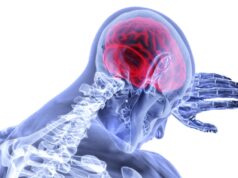By Anil Yallapragada
In 2010, it was reported that the world-wide prevalence of individuals living with a stroke was approximately 33 million,1 with 17 million new strokes occurring every year.2 Additionally, it is estimated that 87% of these strokes are designated ischaemic strokes, with 30–40% having no identifiable aetiology on initial evaluation. For this reason, these strokes receive the designation of cryptogenic strokes or embolic strokes of undetermined source (ESUS).3
In the USA alone, approximately 200,000 new strokes each year are categorised as cryptogenic.4 The greatest risk factor for having a recurrent stroke is having the prior diagnosis of stroke. It is imperative that every effort be made to properly uncover the potential mechanism behind a stroke with appropriate investigations so that secondary prevention interventions and treatments can be administered. Potential causes of cryptogenic stroke include a patent foramen ovale, inherited thrombophilias, aortic arch atheromas, infectious, autoimmune, inflammatory states, and cardiac arrhythmias such as atrial fibrillation.
Atrial fibrillation (AF) is one of the most common and undertreated heart rhythm disorders in the USA, and is a major risk factor for stroke. If a person has AF, he or she is five times more likely to have a stroke.5 An AF-related ischaemic stroke is more likely to be associated with greater disability, and is two times more likely to be fatal than a non-AF stroke.6 Detecting AF allows physicians to change a patient’s medical therapy, specifically, from an anti-platelet to oral anticoagulation to effectively and significantly reduce his or her risk of having a second stroke.

To help improve patient outcomes, the European Society of Cardiology (ESC) recently updated its guidelines to include long-term cardiac monitoring with an insertable cardiac monitor (ICM) for ischaemic stroke survivors who do not have an established mechanism. This is the first-time practice guidelines recommend this option as part of clinicians’ diagnostic work-up. This is important since historically short-term event and holter monitors (worn for 30 days or less) have been used to monitor patients for AF following a stroke—even though diagnosing AF and determining how often it occurs is a clinical challenge as episodes can be unpredictable, intermittent, and in many cases, do not cause noticeable symptoms.7 The new practice guidelines reinforce the growing need for long-term cardiac monitoring in cryptogenic stroke patients to help improve AF detection.
According to the new ESC clinical practice guidelines for the management of AF, prolonged monitoring “seems reasonable in all survivors of an ischaemic stroke without an established mechanism of stroke or diagnosis of AF’’ (excerpt below):
5.2.4: Detection of atrial fibrillation in stroke survivors: Sequential stratified ECG monitoring detected AF in 24% (95% CI 17–31) of stroke survivors, and in 11.5% (95% CI 8.9%–14.3%) in another meta-analysis, with large variations depending on the timing, duration, and method of monitoring. AF detection is not uncommon in unselected stroke patients (6.2%, 95% CI 4.4–8.3), but is more likely in patients with cryptogenic stroke implanted with loop recorders or who have had ECG monitors for several weeks.
Cryptogenic stroke is defined as a stroke in which the cause could not be identified after extensive investigations. A broader definition is embolic stroke of undetermined source. Several studies have also found AF in patients in whom another competing cause for stroke has been identified clinically (e.g. hypertension or carotid artery stenosis). Hence, prolonged ECG monitoring seems reasonable in all survivors of an ischaemic stroke without an established diagnosis of AF.
 Similarly, according to a growing body of clinical evidence, short-term monitoring is not sufficient for AF detection in cryptogenic stroke patients. As evidenced by the CRYSTAL AF study (published in the June 2014 issue of the New England Journal of Medicine), long-term cardiac monitoring with a Reveal insertable cardiac monitor (Medtronic) was superior to standard medical care for AF detection in patients with cryptogenic stroke, and reinforced that short-term cardiac monitoring is not sufficient.8
Similarly, according to a growing body of clinical evidence, short-term monitoring is not sufficient for AF detection in cryptogenic stroke patients. As evidenced by the CRYSTAL AF study (published in the June 2014 issue of the New England Journal of Medicine), long-term cardiac monitoring with a Reveal insertable cardiac monitor (Medtronic) was superior to standard medical care for AF detection in patients with cryptogenic stroke, and reinforced that short-term cardiac monitoring is not sufficient.8
Results showed:
- 6.4 times more AF detected at six months in insertable cardiac monitor (ICM) group (8.9% vs. 1.4% in control) (p<0.001 by log-rank test)
- 7.3 times more AF detected at 12 months in ICM group (12.4% vs. 2% in control) (p<0.001 by log-rank test)
- 8.8 times more AF detected at 36 months in ICM group (30% vs. 3% in control) (p<0.001 by log-rank test).
Additionally, one-year, observational real-world results with the Reveal LINQ ICM recently presented at the 2016 American Academy of Neurology Annual meeting (AAN; 15–21 April, Vancouver, Canada) found that the Reveal LINQ ICM detected AF at a greater rate than previously reported in the CRYSTAL AF study.
Results showed:
- At 12 months, 1,737 AF episodes were detected in 192 patients, resulting in an AF detection rate of 16.3%. This represents a 32% relative increase compared to the rate observed in the CRYSTAL AF study at the same time.
- The study also found that 72% of patients diagnosed with AF would have been undiagnosed if their cardiac monitoring had been limited to 30 days.
- The real-world data validated what was previously found in the CRYSTAL AF study and suggest that AF may be occurring at an even greater rate than previously thought.
At the University of South Carolina, Columbia, USA, where I practice in the buckle of the stroke belt, it is unfortunately not uncommon to have a patient return to the hospital with a secondary stroke that is later discovered to have paroxysmal AF as a cause. This happens for a number of reasons with a few of the most common being: (1) Cryptogenic stroke patients are evaluated ineffectively with a short-term cardiac or event holter monitor worn for approximately 30 days or less and where underlying AF is never detected, (2) patients living in rural areas have increasing challenges with clinic follow up and (3) there are issues with compliance particularly in using the monitor appropriately.
By using a long-term ICM in my own practice, I have been able to effectively diagnose many cryptogenic patients with underlying AF and provide the appropriate secondary prevention anticoagulation therapy. With the recent guideline change it is anticipated that more practitioners will begin to utilise this technology as well to better assess and treat their patients. I have seen first-hand how ICMs have led to greater AF detection, improved care and risk reduction for my cryptogenic stroke patients.
References:
- 2010 American Heart Association heart and stroke facts
- World Stroke Congress fact sheet and American Heart Association fact sheet
- Lancet Neurol. 2014 Apr;13(4):429-38. doi: 10.1016/S1474-4422(13)70310-7.
- Adams HP Jr. Stroke. Jan 1993; 24; 35-41.
- Wolf PA, et al. Stroke. 1991; 22; 983-988.
- Lin HJ, et al. Stroke. 1996; 27:1760-1764.
- Kamel. Detection of Atrial Fibrillation and Secondary Stroke Prevention Using Telemetry and Ambulatory Cardiac Monitoring. Curr Atheroscler. Rep, 2011, 13: 338-343.
- Sanna T, Diener HC, Passman RS, et al. Cryptogenic Stroke and Underlying Atrial Fibrillation (CRYSTAL AF). N Engl J Med. 2014; 370(26):2478-2486.
Anil Yallapragada is assistant professor and division chief of Neurovascular Medicine at the University of South Carolina School of Medicine and medical director of Stroke at Palmetto Health Systems, Columbia, USA













